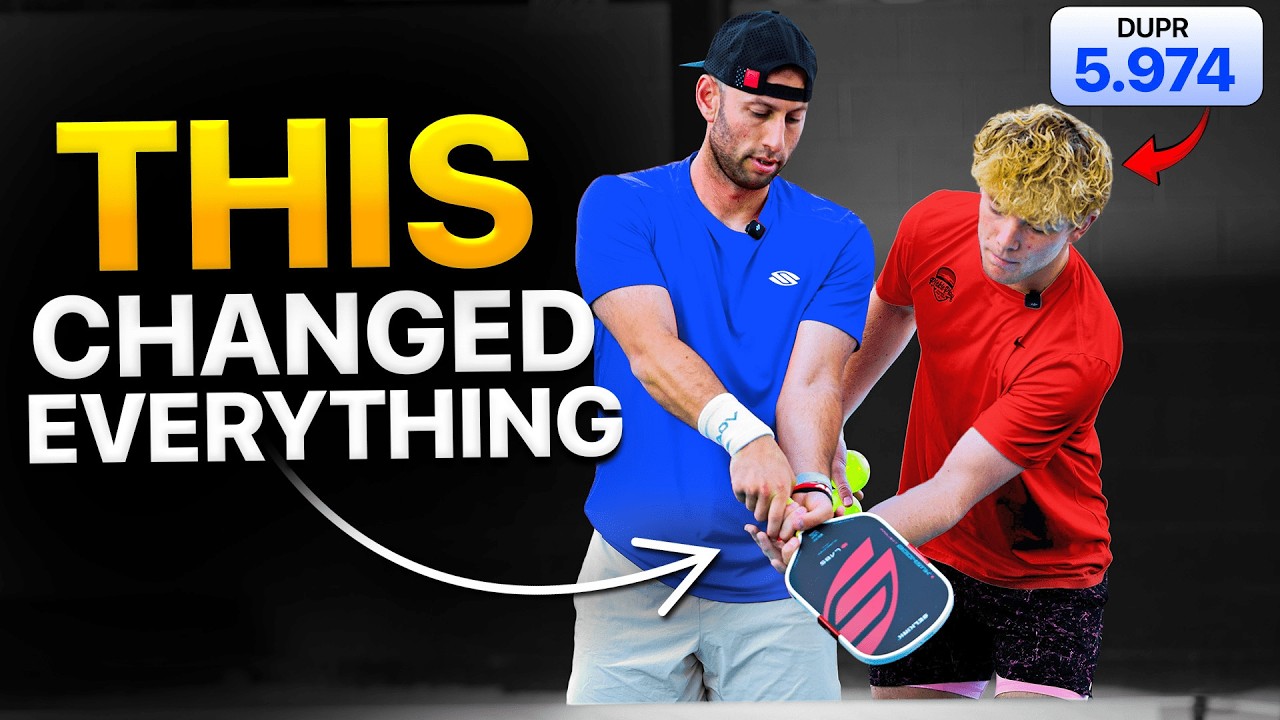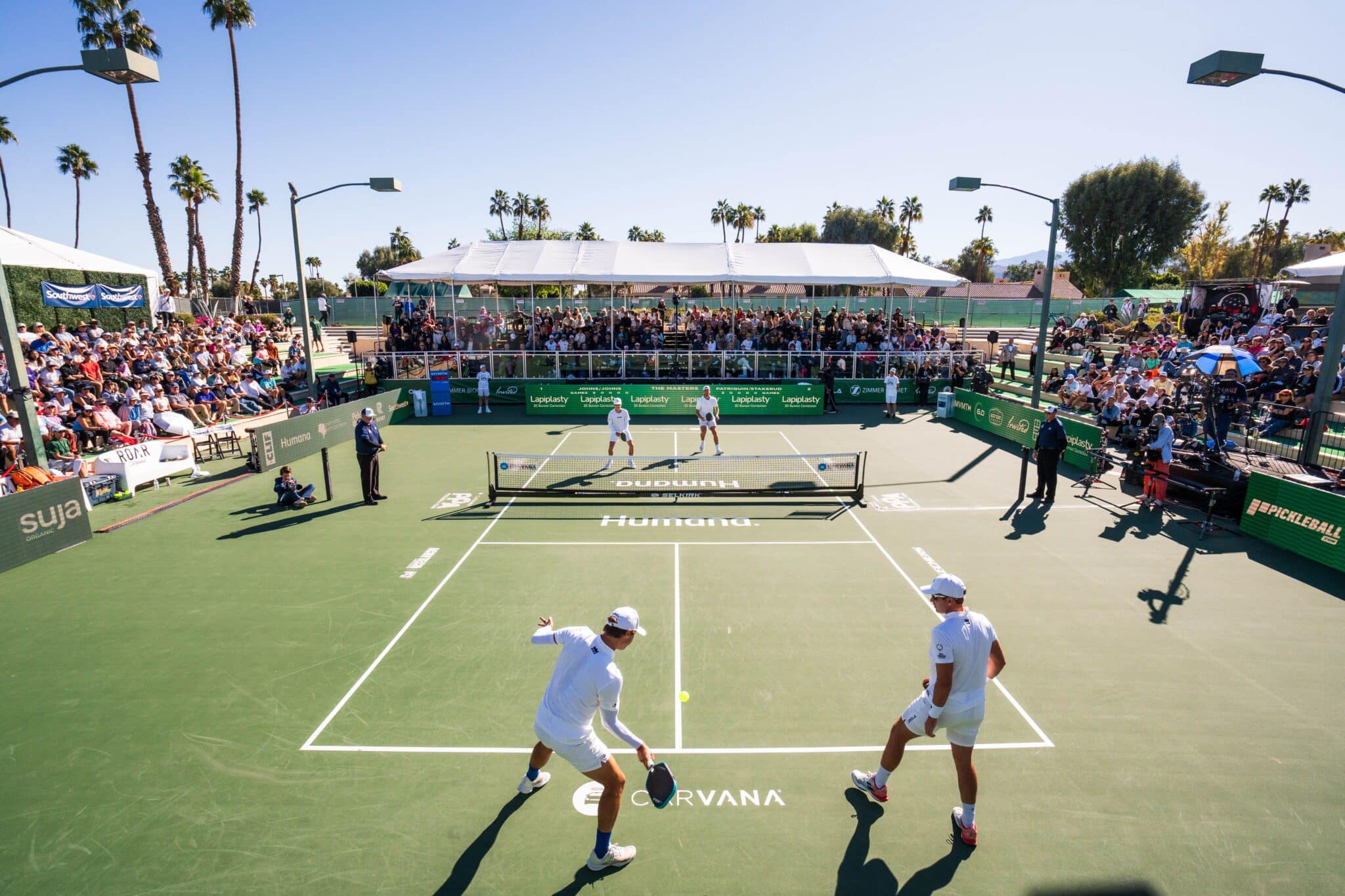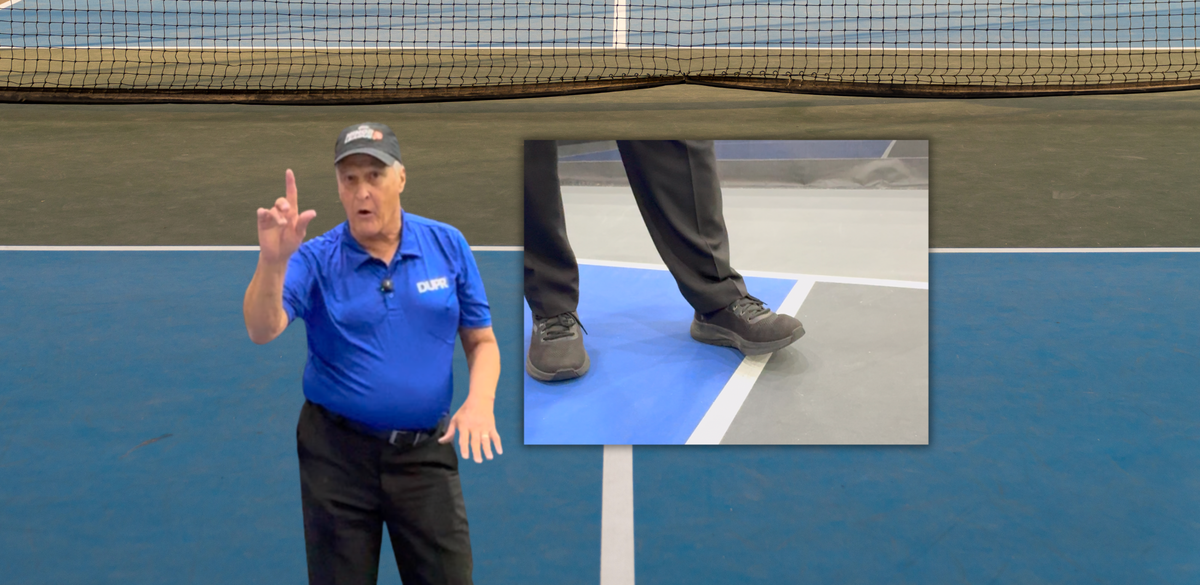Stop playing the fourth shot like it's a formality. Instead, recognize it for what it is: your last chance to apply pressure before your opponent gets a chance to attack.
In a new video, McGuffin breaks down the fourth shot, that critical stroke you hit after returning serve and establishing court position.
Most players treat it like a formality, a safe drop to keep the rally going. But McGuffin sees it differently. He sees it as your chance to apply pressure, keep your opponents deep, and make them feel the weight of your presence as they move forward.
Love pickleball? Then you'll love our free newsletter. We send the latest news, tips, and highlights for free each week. Sign up for our free newsletter.
The Problem Nobody Talks About
Most recreational players hit a solid return, move up to establish court position, and then... they basically hand their opponents an invitation to the kitchen line. They lean in, take a half volley or an air ball, and play it safe. The result? Their opponents waltz up to the net without any resistance.
"The last thing you want to do when you've hit a return and you're in control of the court position is just invite your opponents up to the party," McGuffin says.It's a simple statement, but it cuts to the heart of why so many intermediate players plateau. They're surrendering control at the exact moment they should be tightening the screws.
The fourth shot matters because it's often the last ball before your opponent gets a chance to attack.
The Art of Taking a Step Back
McGuffin's primary solution? Take a step back. Seriously. When you find yourself overextended or chasing a floatier drop, backing up gives you time and space to be more aggressive off the bounce.
"Plan A should always be take it out of the air," McGuffin explains.
But if you're getting pulled forward and the ball is dropping low, that's when you pivot. Instead of leaning in and playing safe, you retreat, let the ball sit up to its highest peak, and then look to be aggressive off the bounce.
The pressure differential is striking. When McGuffin demonstrates this in the video, you can see how much more control and intent he has when he's not overextended. His opponent has to work harder, dig deeper, and suddenly the transition becomes a battle.
Avoid These 3 Deadly Mistakes to Master Aggressive Dinking
The aggressive dink isn’t about overpowering your opponent. It’s about creating pressure through placement, using deception to keep them guessing, and understanding when to attack versus when to reset
 The Dink PickleballAlex E. Weaver
The Dink PickleballAlex E. Weaver

Roll Volleys: The Secret Weapon
McGuffin introduces the roll volley as a way to stay aggressive from lower ball positions that would normally be considered defensive.
A roll volley is essentially a low-to-high swing that generates topspin and movement. The beauty of it? You can take a ball that should be safe or non-attackable and actually be aggressive with it. You're not trying to hit a winner; you're trying to create movement and force your opponent to make a difficult contact.
The mechanics are straightforward but require practice.
- On the forehand side, McGuffin uses a clock analogy: if the ball is at two o'clock, he positions himself at three o'clock. If it's at three, he's at four.
- The key is getting underneath the ball and swinging low to high, finishing the stroke right in front of your face.
"Even though this looks wristy, it's 30% wrist to 80% shoulder," McGuffin notes.
You're primarily using your shoulder for control, with just a flick of the wrist to generate spin. The grip can be continental, eastern, or semi-western, depending on what feels natural.
On the backhand side, McGuffin prefers extreme continental grip, which generates more RPMs and more friction. The motion is similar: start at six o'clock, finish at twelve o'clock. The goal is the same; create topspin, create movement, and keep your opponent under pressure.
Master the Two-Handed Backhand Dink: A 10-Minute Lesson from a Pro
Topspin is taking over pickleball. If you’re still relying solely on slice dinks, you’re playing too much defense. And nobody wins tournaments by playing defense.
 The Dink PickleballThe Dink Media Team
The Dink PickleballThe Dink Media Team

The Takeaway
So, stop inviting your opponents to the kitchen line. Stop playing the fourth shot like it's a formality. Instead, recognize it for what it is: your last chance to apply pressure before your opponent gets a chance to attack.
Take a step back when you need to. Use your forehand. Hit roll volleys with intent. Make them feel heavy pressure as they move forward. Over time, that pressure compounds. They'll rush. They'll make mistakes. And you'll win more points.
That's the fourth shot advantage.
Anuncie Aqui / Advertise Here
Sua marca para o mundo Pickleball! / Your brand for the Pickleball world!

 English
English  Spanish
Spanish  Portuguese
Portuguese  German
German  Italian
Italian  Japanese
Japanese  French
French  Polish
Polish  Russian
Russian  Netherlands
Netherlands  Hungarian
Hungarian  Turkish
Turkish  Videos
Videos 








 English (US) ·
English (US) ·  Portuguese (BR) ·
Portuguese (BR) ·